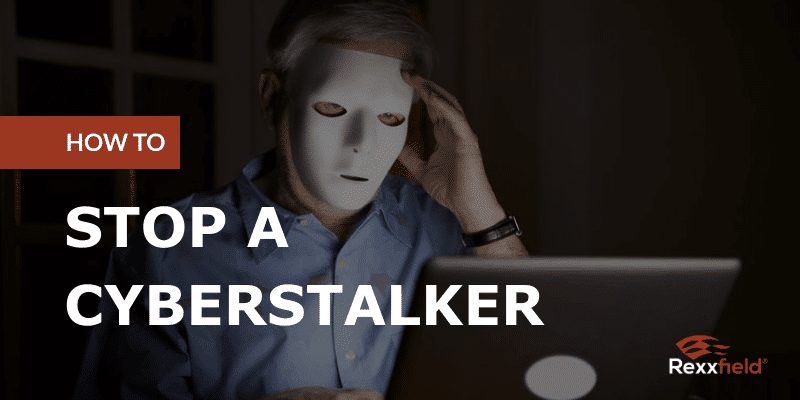How can you stop a cyberstalker?
Definition of cyberstalking
The definition of cyberstalking is a crime in which the stalker harasses a victim through electronic communication. This could happen through email, texts, calls, or messages posted on a website or discussion forum. A cyberstalker relies on the anonymity of the internet, which allows them to stalk victims without being identified. Cyberstalking is different from cyber-spam, where a spammer targets a group of people with annoying messages. Whereas cyberstalkers target a specific victim and often use threatening messages.
The legal definition of cyberstalking is:
“The use of electronic communication to harass or threaten someone with physical harm.”
According to the FBI, cyberstalkers can get up to five years in prison and a fine of $250,000. When cyberstalking results in death, a life sentence can be imposed.
How to report cyberstalking
When you are a victim of a cyberstalker, seek help from your local law enforcement agency. If they can’t help, you can file a complaint with the FBI Internet Crime Complaint Center IC3.
You can also turn to PICDO, a Private International Cybercrime Disruption Organisation. This organization is managed by licensed private cyber investigators who specialize in internet crime and digital forensics.
In most cases, they will be able to help you, and otherwise, they will forward you to the party who can.
If you need the cyberstalker to be identified quickly, our own cyber investigators’ department can assist. We specialize in identifying anonymous users and offer litigation support where needed.
Help me identify a cyber stalker
If you fall victim to harassment, follow these steps. Know your stalker’s behavior, and ALWAYS keep the harassing texts, images, emails, chats, web messages, etc., so you can present this evidence to your local law enforcement agency or other parties.
We can help stop a cyberstalker.
If you know who the stalker is, your local law enforcement agency should be able to assist. However, in most cases, the stalker is anonymous, and even though you might have a suspicion about whom the person behind the harassment is, you still need proof.

Our investigators can identify anonymous users on websites, Facebook, Twitter, Whatsapp, and emails, through phone calls and texts, etc. Our cyber investigators and partner attorneys have a demonstrated track record of tracing and positively identifying anonymous cyberstalkers. We can help you identify your stalkers, often without court action.
You can find our case studies here.
Help me identify my cyberstalker
How to prevent cyberstalking
- Be selective in the personal information you share on the internet. In emails, social media etc.
- Practice proper password management and online security. Use complex passwords and never share those with anyone. Regularly reset all passwords on all your accounts.
- If you break up with your partner, change all passwords, even if you think your ex-partner doesn’t know them. See it as an extra layer of protection.
- Check all privacy settings on your social media networks, so stalkers can’t see your location or steal photos or other data.
- Be aware of your online presence. How much information can be found about you? We usually advise clients whose online reputation is important for them to build an online buffer. Post enough content that ranks on the first page of Google, so you can control what other people see. When a cyberstalker then tries to post defaming posts about you, it’s much harder for the negative content to rank above your positive search results.


